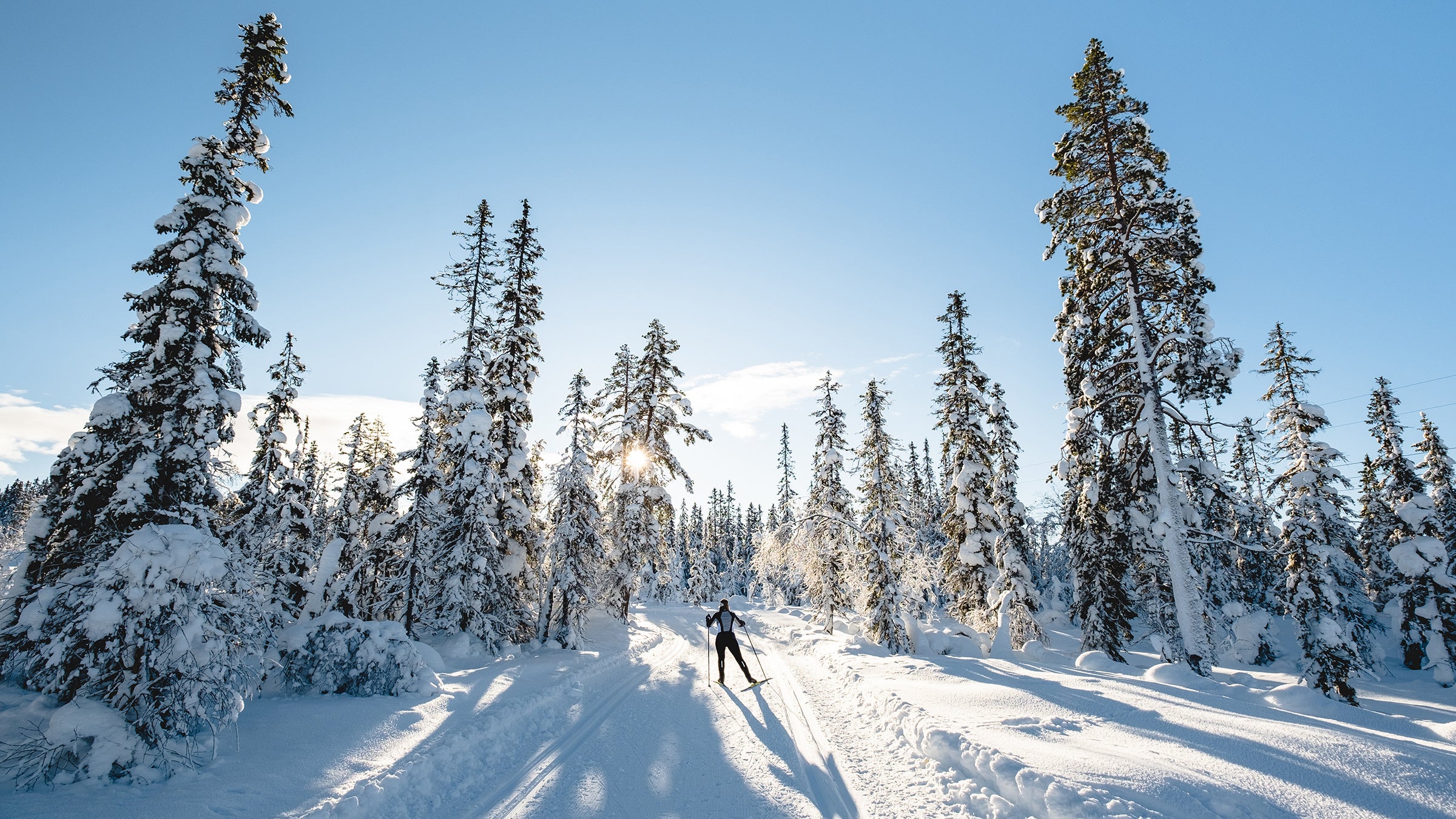It’s a new era for nordic ski manufacturing. Between 2022 and 2023, the number of nordic skiers in the United States increased from 17.71 to 18.46 million. As the sport gains traction, ski manufacturers are pushing the envelope to design skis that flatten the notoriously difficult learning curve, are more environmentally friendly, and fast enough to keep professional skiers on the podium.
While the sport itself is booming, nordic testing circumstances have never been more finicky, with snowless conditions across much of the United States. Fortunately, we had testers in multiples regions of the U.S. and we traveled to higher-snow areas like Arizona’s high country to track down the right conditions. Here are the skis that came out on top this year.
.
At A Glance
- Best Beginner Ski: Fischer Aeroguide Skate 85 ($449)
- Best Elite Race Skate Ski: Salomon S-Lab Universal Skate ($950)
- Best Expert Classic Ski: Rossignol X-ium R Skin ($500)
- Best Touring Ski: Fischer S-Bound 98 Crown/ Dual-Skin XTRALITE ($439)
- Best Endurance Skate Ski: Madshus Endurace Skate ($425)
- How to Choose Cross-Country Skis
- How We Test
- Meet Our Testers
If you buy through our links, we may earn an affiliate commission. This supports our mission to get more people active and outside. Learn more.
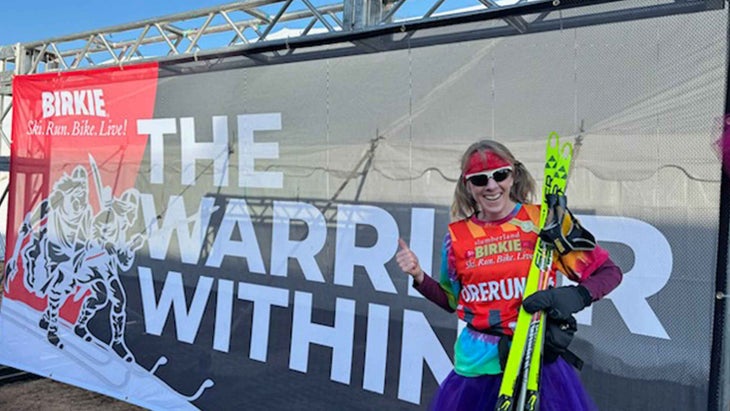
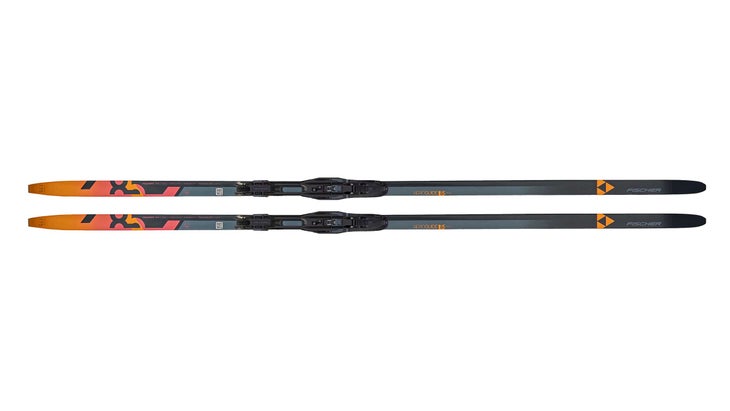
Best Beginner Ski
Fischer Aeroguide Skate 85
Sidecut: 43-40-45 cm
Weight: 1,200 grams/175 cm per ski
Lengths: 165, 175, 185 cm
Pros and Cons
⊕ Forgiving sidecut
⊗ Forgiving sidecut can allow for imperfect technique
There are three design choices that make the new Aeroguide an especially good fit for beginner skate skiers: First, it comes in three relatively short lengths—165, 175, and 185 centimeters—making it easier for beginners to control.
Next, it has a more aggressive, hourglass sidecut (43-40-45) than higher-level skis. The sidecut on Fischer’s top-of-the-line Speedmax Helium Skate Plus is shaped like an arrow. That aggressive side cut provides more grip on the edge, making it much easier to push off when initiating the weight transfer (something beginner skiers often struggle with.)
Lastly, unlike almost every other skate ski on the market, the base has two vertical grooves down the length of the ski, which further increase stability and control when gliding by gripping to the snow.
At its base, the ski is lightweight, with a hollow wood core strengthened by basalt fibers that provide better flex characteristics in a wider range of temperatures than fiberglass. The ski may be slightly heavier than more intermediate and expert-oriented designs, but that also adds stability. With a deeper, coarser base structure (thanks to a grinding process using the hardness of natural diamonds), the Aeroguide is easier to ski in warm, moist conditions—a good thing in a warming world.
Veteran tester Brian Hayden took the Aeroguide for a spin on 12 kilometers of hot laps on the hilly, freshly-groomed, manmade snow at Spirit Mountain Nordic Center in Duluth, Minnesota on a mild, mid 20s winter day. He was duly impressed with the 185-centimeter length, which is seven centimeters shorter than what he normally skis. Despite it being a few hundred grams heavier than the World Cup-level skate skis Hayden normally uses, he praised its stability. “It gave me confidence to get out over my ski.”
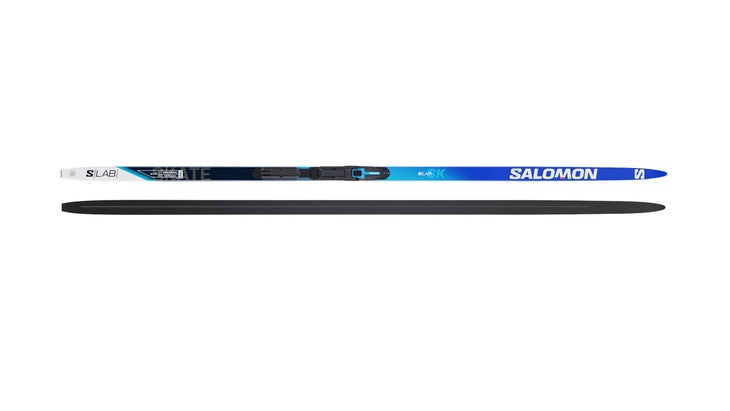
Best Elite Race Skate Ski
Salomon S-Lab Universal Skate
Sidecut: 44-43-44 cm
Weight: 970 grams/192 cm per ski
Lengths: 170, 177, 182, 187, 192 cm
Pros and Cons
⊕ Versatile
⊕ Fast and fun
⊗ Not specifically designed for warm or cold conditions
The snow was so sparse in northern Minnesota this year that I timed my testing of the S-Lab Universal Skate to coincide with the morning grooming at Duluth, Minnesota’s Spirit Mountain Nordic Center. That meant perfect corduroy on a 3.3-kilometer loop that would, in a week, host the US Spring Nationals and Super Tour Finals.
Despite 37-degree temps and soft snow, I loved the way the Unis, known for handling a wide variety of conditions and temperatures ranging from 10 to 30 degrees Fahrenheit, rose to the occasion. They were smooth while climbing punchy hills, cornered well on tight, curvy downhills, and effortlessly glided across the flats. They felt fast even as the sun beat down and turned parts of the course to slush.
Why, unlike more temperature-specific skis, is the Universal so fast in variable conditions? It boils down to an ever-evolving blend of three elements: a proprietary “G5” base formula that improved the ski’s performance in warm conditions, combined with a World-Cup-tested grind pattern that has produced winning results across a wide range of testing circumstances (Note: Olympian gold medalist Jessie Diggins skis on Salomon with the same pattern). Finally, the ski’s flex profile is finely tuned with proper length contact zones, its tips and tails are forgiving enough to allow the ski to float through crud and powder, and it’s just stiff enough to edge well and support the weight of the skier.
Like most elite-level skis, the Uni is constructed of lightweight wood sidewalls and a Nomax core—a strong, light, honeycomb-like structure that’s tough to beat for its strength-to-weight ratio. The ski is then wrapped in a thin-ply carbon that boosts transmission with every stride.
The Uni ski design hasn’t changed for 2025, but Salomon’s Shift Race binding is brand new. It offers adjustable positioning on the plate, allowing skiers to move forward and back on the ski depending on conditions: Shift forward to boost grip on ice, shift back to enhance glide in snowier conditions, or keep the binding at zero, the most neutral position on the ski. Despite the lack of heavy snow, I played around with binding positioning and found that it did finely tune the ski’s performance. The downside to Salomon’s system, however, is that skiers have to remove the ski to shift the positioning lever—it can’t be done while skating.
For experienced racers who only want one or two skis, the S-Lab Universal Skate is a do-it-all World Cup-level ski.
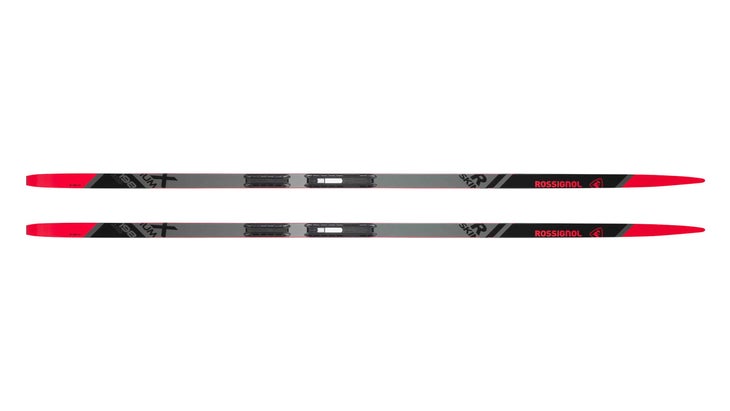
Best Expert Classic Ski
Rossignol X-ium R-Skin
Sidecut: 40-44-44 cm
Weight: 550 grams/198 cm per ski
Lengths: 186, 191, 198, 203, 208 cm
Pros and Cons
⊕ An ultralightweight ski fast enough for racing, without the hassle of waxing
⊗ If weight isn’t transferred correctly on the stride, even the mohair skins can’t stop the classic ski from backsliding
The first version of this ski was born around 2016 when Rossignol manufactured about 4,000 pairs of its first iteration of the X-ium R-Skin. In the near decade since, Rossignol has tinkered with the skin ski’s camber shapes and profiles, internal construction, grind patterns, and skin shapes and placements to create the universally beloved X-ium R- Skin. The R Skin is now so popular that Rossignol manufactures hundreds of thousands of pairs—even the most diehard skate skiers have good reason to fall in love with classic skiing all over again with this ski.
Like the Salomon S-Lab Universal Skate, the X-ium R Skin’s core is made from Nomex Honeycomb, the honeycomb structure that offers ultra-lightweight precision and powerful energy transmission. The core is covered in a fiberglass “cap,” a continuous cover that extends from one sidewall over the top sheet and onto the other sidewall. The result is a ski that offers both torsional rigidity and supple flex in the tips and tails, making for a smooth and stiff ride.
This year Rossignol removed the shiny varnish from the ski, which had both intended and unintended results. The varnish contained chemicals that factory workers could have breathed in, so now the ski is more eco- and health-friendly without it. The other bonus: Varnish created a stiff outer coat which affected the tension on the ski. Without it, the ski is slightly lighter and flexes more smoothly, which puts less pressure on the tips and tails when weighted, making the ski easier to kick (and much more fun.)
Our Jackson, Wyoming-based tester Adam Meyer found that while Rossignol’s cosmetic change to the X-ium R-Skin weren’t “trying to reinvent the world of skin skis,” the ski was a blast in multiple conditions. Meyer said that it maintained the classic Rossignol responsiveness, while remaining stable when kicking and gliding thanks to its generous mohair skin. As Meyer reported: “the ski did its job well.”
Overall, this is an expert-level classic ski that’s fun and fast enough to place on the podium.
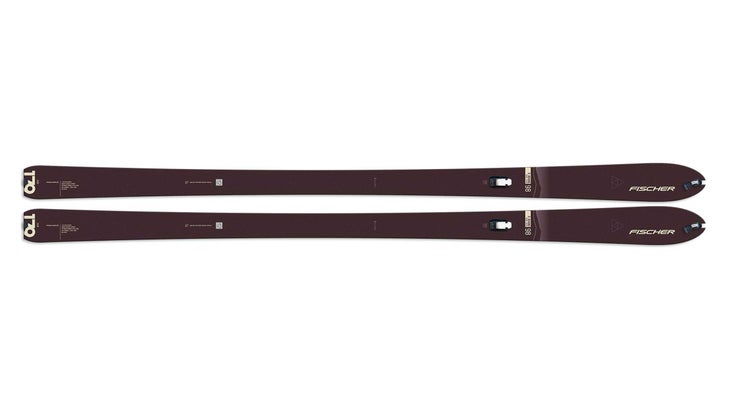
Best Touring Ski
Fischer S-Bound 98 Crown/ Dual-Skin XTRALITE
Sidecut: 98-69-88 cm
Weight: 2,200 g/179 cm per ski
Lengths: 159, 169, 179, 189 cm
Pros and Cons
⊕ Fun and light
⊕ Grips well on steep uphills
⊗ Not enough heft to cut through heavy powder
If this year’s testing had a motto, it was “Be Prepared.” As in: Be prepared for thin ribbons of snow between patches of mud in northern Michigan; dense, spring corn in northern Arizona, or boilerplate hardpack in Minnesota. The beauty of the S-Bound 98 Crown, a lightweight backcountry touring ski, is that it took all of these conditions in stride, especially excelling in the hardpack.
This adaptable and sturdy ski is a bestseller in the Fischer line. Its new, ultra-lightweight paulownia wood-and-fiberglass core has hollow air channels throughout. Not only does the fiberglass reinforcement make the ski stronger than one with a solid wood core, but the air chambers distribute pressure better, too. A “nordic rockered” tip also makes the S-Bound easier to glide and turn in deeper, untracked snow, and a narrow steel edge makes for stable contact on every surface.
I was especially impressed with how the skis’ fish-scale base gripped while skiing uphill on boilerplate hardpack at my local alpine area in Duluth. I didn’t even need to slap on one of Fischer’s two mohair-and-nylon skins—the short “Easy Skin” or the full-length “Super Skin”— compatible with this ski.
On a day with particularly challenging conditions, when I expected testing to be all business and no play, the S-Bound surprised me. I found plenty of purchase on a steep climb with thin snow, which made it almost as much fun as the downhill. Thanks to metal edging and an enhanced rocker on this nimble ski, the downhill was a blast, too.
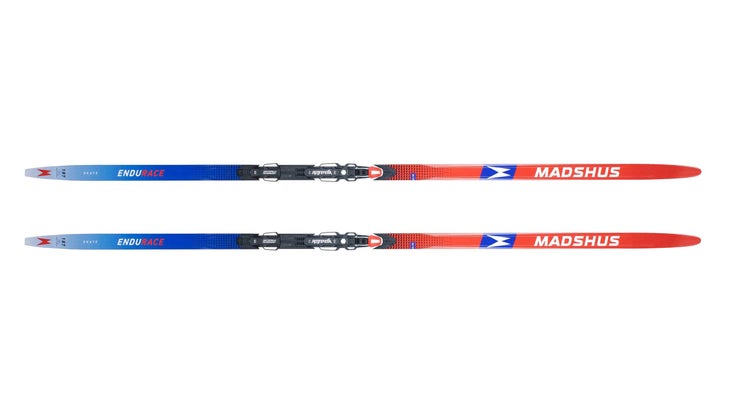
Best Endurance Skate Ski
Madshus Endurace Skate
Sidecut: 44-43-44 cm
Weight: 1094 grams /187 cm per pair
Lengths: 172, 177, 182, 187, 192 cm
Pros and Cons
⊕ A powerful ski that can plow through crud on days when the skate deck isn’t perfectly groomed
⊗ Speed is not the defining feature of this ski
World Cup-level skate skis are like Formula One race cars: feisty and deadly until you’ve learned how to handle them on curves, hills, and corners. The beauty of the Endurace Skate—which is two steps below Madshus’ top-of-the-line World Cup Redline skate ski but still “race-inspired”—is that a few design tweaks allow it to occupy that liminal space between an elite-level race ski and a more stable, forgiving endurance ski. The Endurace is all about balance. Its moderate sidecut makes it feel solid underfoot while still being maneuverable at all speeds. And its proprietary foam core has an excellent strength-to-weight ratio, making it responsive but not so jittery that you feel a crash is imminent around every corner. Madshus also dialed back the camber to reduce the Endurace’s aggressiveness while still keeping it lively.
Madshus came late to the testing party at the end of March, which is a notoriously tricky month in terms of conditions. We took it out on ten kilometers of a skate deck that had been left ungroomed through at least two or three freeze-thaw cycles, leaving it terrifyingly rutted and icy in patches and knee-tweaking slushy in others. But we were impressed with how gracefully the Endurace handled the conditions, letting us eke out the last bits of joy during a tough end-of-season snow week.
How to Choose Cross-Country Skis
Nordic skiing has a steep learning curve. But every year, the ski design, technology, and material keeps shortening that curve. The first step is to determine which type of ski you want: classic, skate, backcountry touring, or hybrid touring/track ski. For first-time buyers looking for the best ski for their budget, it’s essential to go to a shop and talk with a nordic expert who can also take your weight, height, and other dimensions to fit you with the perfect ski.
Classic
Classic skis, most often used in a groomed track, are longer than skate skis and require a stride in which you propel your skis forward in a parallel motion. This sport has been around for millennia, but it’s still very challenging to learn perfect technique. All nordic skis require a base with friction that comes in the form of waxless fish scales, a mohair/nylon grip known as a skin, or a smooth base on which you apply kick wax that sticks depending on the temperature of the snow.
Once the standard, waxable classic skis used by elite racers who are used to the speed and grace of a full glide with little friction, are being replaced by skin skis, also a favorite of a wide variety of enthusiasts and waning ski racers who want to eliminate the hassle and extra maintenance of waxing. Today’s skin skis are so fast, light, and stable that they are an excellent option to train or even race on. Most beginners prefer the maintenance-free option of fish scales, which are carved into the ski’s base, thus requiring no waxing.
Skate
Skate skis are used on a groomed skate deck that looks like the horizontal corduroy we see at an alpine resort. Instead of propelling skis in a parallel motion, skiers use a faster skating technique, where the skis are in a V shape and the skier transfers weight from one ski, pushing off and gliding, then transferring it to the other—sort of like a speed skater—except with help from poles, which are generally moved in unison. It’s a difficult technique to learn but feels akin to flying once you have it down.
Skate skis are shorter than their classic counterparts by about 10-15 centimeters and have more rounded tips. In general, shorter skies are easier to handle, while longer skis provide better glide. Flex and structure are two other important specs. A more flexible ski is more forgiving for softer snow, and a more rigid or structured ski is better on hardpack for power transfer but can also be harder for an inexperienced skier to drive. There are so many factors when considering the best skate ski that it’s especially important for first-time buyers to go to a ski shop and get properly fit by a professional.
Touring
Touring skis are for those who want to get off the trail and into the woods or rolling sidecountry in ungroomed terrain. Like alpine skis, touring skis have steel edges that make carving on downhills easier, but even with their sculpted waists and rockered tips, the lightweight touring skis you might use in the Midwest aren’t designed for alpine terrain like ski mountaineering skis are. Depending on how you want to use them, most lightweight touring skis are equipped to handle a touring, alpine touring, or telemark binding. The length is generally shorter than classic yet longer than skate. A touring ski usually requires a slower, more truncated version of a classic stride because the terrain is variable and mostly ungroomed.
How We Test
- Number of testers: 4
- Number of products tested: 24
- Number of miles skied: 415
- Number of states tested in: 5 (MN, WI, MI, WY, AZ)
Call it La Niña, climate change, a weird anomaly, or a combination of all three, but the upper Midwest, where most of our testers are located, had one of the worst snow years on record. The warmest day we skied—in a mix of snow and rain—was 40 degrees Fahrenheit. The coldest day, on the other hand, barely hit the teens, an almost unheard of anomaly. As a result, we had to resort to creative testing, shipping skis across the country, timing our lives to the snowmaking and grooming schedule at local ski centers, and racing in shortened events.
Between our four main testers, we skied an American Birkebeiner that was abbreviated from 50 to 30 kilometers, did a dizzying number of hot laps on the impeccably groomed manmade snow of the 3.3K SuperTour Finals and Spring Nationals course at Spirit Mountain Nordic Center in Duluth, Minnesota, road-tripped to Michigan’s Upper Peninsula, and sought out the last patches of spring snow in Jackson, Wyoming. The best snow of all? Arizona Nordic Village, a sweet oasis of 40 kilometers of trails starting at 8,000 feet about 20 minutes northwest of Flagstaff.
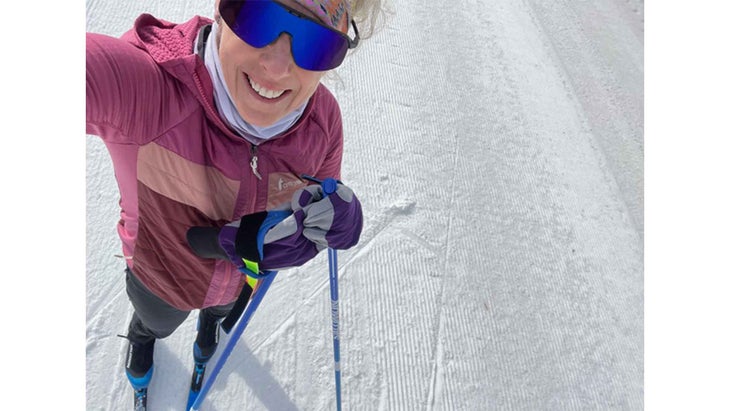
Meet Our Testers
Adam Meyer
Adam grew up in Maine where he spent winters tubing and skiing in his backyard. His love for nordic skiing blossomed when he began racing in high school and went on to ski for Tufts University. Since college, Adam has coached nordic ski teams in Vermont, Colorado, and, now, Jackson Wyoming.
Jen Pearson
Jen Pearson is a physician and associate professor in the Department of Family Medicine and BioBehavioral Health at the University of Minnesota. She’s raced the American Birkebeiner more than 20 times with multiple top 20 finishes.
Brian Hayden
Brian Hayden is the founder of the Duluth Devo Mountain Bike Program. He’s a former collegiate nordic ski racer and ski wax technician for the Duluth East High School Nordic Ski Team. His patience at the wax bench made this test possible.
Stephanie Pearson
Category manager Stephanie Pearson grew up in Duluth, Minnesota, cross-country skiing out her backyard. She started at ���ϳԹ��� as an intern in 1995 and has worked in various positions with the magazine, most recently as a contributing editor, for almost three decades. In 2023 she became a National Geographic Explorer.


